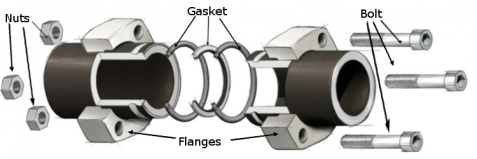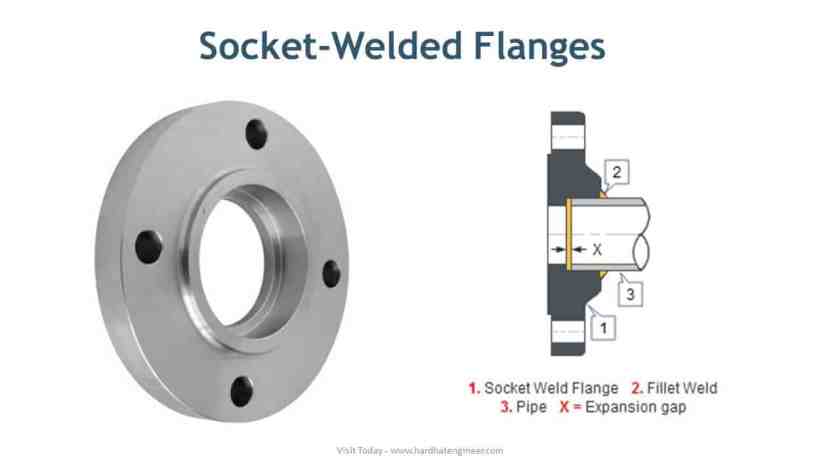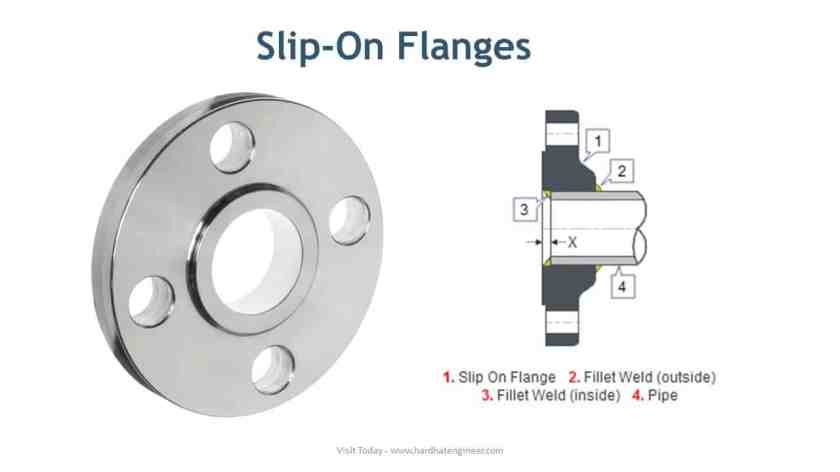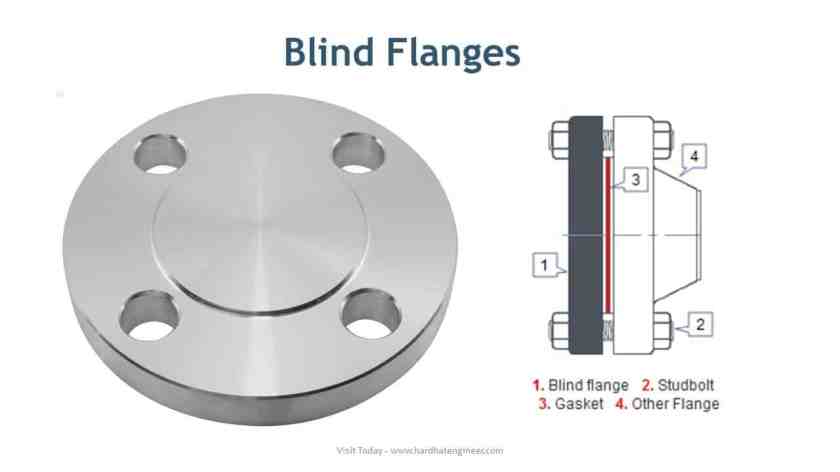Flange connection is one of the most commonly used joining method in the industry to connect pipes, valves, pumps, hoses and other equipment. It is often chosen because it is simple and convenient to use. Flange connections provide easy access for cleaning, inspection or modification. Connection or joint is made when two flange faces are aligned, brought together and tightened with bolts and nuts. Below is the detailed breakdown of a flange connection.

Based on the diagram above, flange connection can be broken down simply into flange faces, gasket and bolts & nuts.
Choice of flanges is largely dependable on;
- Types/Standards ASME B16.5 and/or B16.47 etc.
- Contact Surfaces (Raised Face, Flat Face, Ring Type Joint and etc)
- Pressure Ratings (150lbs, 300lbs, 400lbs, 600lbs, 1500lbs and 2500lbs)
- Design Temperature
- Materials (Forged steel, Stainless steel, PVC, Special Materials)
- Sizes and Wall Thickness (Schedule)
TYPES OF COMMONLY USED FLANGES
Lap Joint Flange

Lap joint flange consists of 2 main parts: stub end and loose flange. The stub end will be welded to the pipe/fitting while loose flange will slip over the pipe and roam freely. Lap joint flange provides great flexibility for the assembly as it has the freedom to swivel and It is easy to line up.
Lap joint flange is suitable for application that requires frequent dismantling and lower pressure.
Weld Neck Flange

Weld neck flange is characterized with a long-tapered neck/hub which then strongly welded with pipe. The neck/hub grows wider from the welded end to the flange face. Because the bore of both the pipe and hub matches, creating a seamless flow path, erosions and turbulences can be greatly reduced. Weld neck flange is a great fit for higher pressure and higher temperature application.
The downside of weld neck flange is that it is bulkier and relatively higher in cost.
Socket Weld Flange

Socket weld flange has a female socket inside its bore hole as the resting place for the inserted hose. Socket weld flange is suitable for low pressure and low temperature application. A gap of 1/16” (shown by x) between the hose end and the socket needs to be maintained to reduce residual stress that could occur during solidification of the weld metal. The flange and the hose will then be welded together.
Slip-On Flange

Similar like socket weld flange, slip-on flange has a bore hole in which hose can slip-on. The only different is that slip-on flange does not have a female socket for the hose to rest. Slip-on flange has lower strength when compared to weld neck flange.
Blind Flange

Blind flange entirely blank off the hose end to terminate the fluid flow and isolate the piping system. Blind flange is applicable for high pressure.
Threaded Flange

Threaded flange uses thread to secure the connection between the hose and the flange. It is fast, simple and easy to assemble or disassemble.
However, threaded flange is only applicable for low pressure and the threaded pipe needs to be relatively thicker to form the thread to screw on.
In Summary
| Types of Flanges | Characteristics |
| Lap Joint Flange | · Consists of stub end and lap joint flange
· Flange can roam and rotate freely · Applicable for low pressure · Easy to install and dismantle · Flange does not touch the fluid, hence can be salvaged |
| Weld Neck Flange | · Long tapered neck/hub as a strong support
· Suitable for higher pressure and temperature · Bulky and relatively costlier |
| Socket Welded Flange | · Slip in bore hole in the centre
· Bore hole has a female socket in which a pipe is fitted · Applicable for low pressure and temperature application |
| Slip-On Flange | · Slip in bore hole in the centre
· Applicable for low pressure |
| Blind Flange | · Blank off end to terminate flow
· Applicable for high pressure. |
| Threaded Flange | · Threading inside of flange bore hole
· Hose has thick wall thickness · Easy to connect/disconnect · Applicable for low pressure |
Final Word
If you are looking for any of these flanges, you may like to contact us at (65) 6298 3211 or enquiry@wahjooseng.com. Wah Joo Seng can assemble, deliver and supply our hose assemblies with flanges! Check out our flange collections here!
References:
